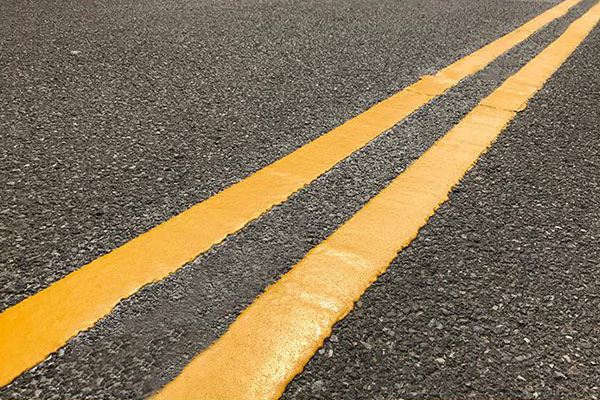The Importance of Thermoplastic Road Marking Paint Thickness
Road safety is a paramount concern for both motorists and pedestrians alike. One often overlooked but crucial aspect of ensuring safety on roadways is the application of road markings. Among the various types of road marking materials available, thermoplastic road marking paint stands out for its durability, visibility, and longevity. In this article, we’ll delve into the significance of thermoplastic road marking paint thickness and how it plays a pivotal role in enhancing safety and longevity.

Understanding Thermoplastic Road Marking Paint:
Thermoplastic road marking paint is a synthetic resin-based material that becomes molten when heated and solidifies upon cooling. This unique property allows for a seamless application process and ensures a robust bond with the road surface. Composed of pigments, glass beads, binder resins, and filler materials, thermoplastic paint creates highly visible and reflective road markings.
Thickness Matters:
The thickness of thermoplastic road marking paint is a critical factor that directly influences its performance and durability. Optimal thickness typically falls within the range of 2 to 3 millimeters. This ensures the longevity of road markings, even under harsh weather conditions and heavy traffic. The thickness of the paint determines its ability to withstand abrasion, weathering, and other environmental factors that may impact its visibility and functionality.
Enhanced Visibility and Safety:
Adequate thickness in thermoplastic road marking paint significantly improves visibility, especially during adverse weather conditions such as rain, fog, or low light. The reflective properties of the paint, coupled with a sufficient thickness, contribute to better delineation of lanes, crosswalks, and other road markings. This, in turn, enhances driver awareness and reduces the risk of accidents.
Longevity and Cost-effectiveness:
Thicker thermoplastic road markings exhibit greater resistance to wear and tear, resulting in an extended lifespan. While the upfront cost of applying a thicker layer may be marginally higher, the long-term benefits far outweigh the initial investment. Reduced maintenance and repainting frequency translate to cost savings for road authorities and municipalities in the long run.
Compliance with Standards:
Various countries and regions have established standards and guidelines for road markings, including specifications for the minimum thickness of thermoplastic paint. Adhering to these standards ensures uniformity and consistency in road markings, contributing to a safer and more predictable road environment.
Application Techniques:
Achieving the optimal thickness of thermoplastic road marking paint involves employing precise application techniques. Professional contractors utilize specialized equipment(Thermoplastic Road Marking Machines) to ensure an even and consistent layer of paint. Factors such as surface preparation, temperature, and curing time also play crucial roles in determining the final thickness and quality of the road markings.
Conclusion:
The thickness of thermoplastic road marking paint is a crucial factor that directly impacts its performance, visibility, and durability. Investing in the application of an adequate thickness, typically ranging from 2 to 3 millimeters, not only enhances road safety but also proves to be a cost-effective measure in the long run. By prioritizing the proper application of thermoplastic road marking paint, authorities can create roadways that are not only visually appealing but also significantly safer for all road users.

